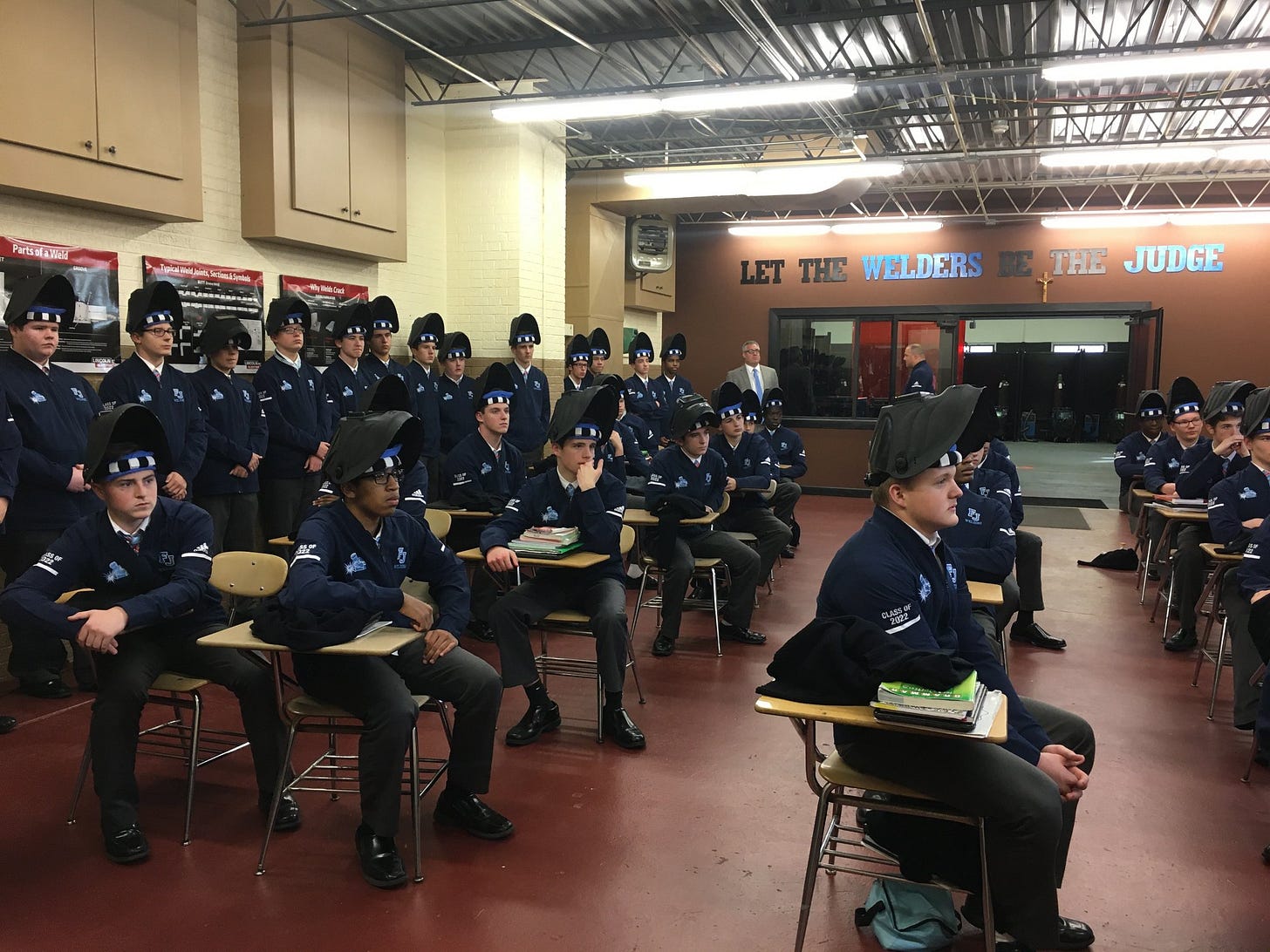It’s the Workforce, Stupid
Education & Labor Align as Supreme Court Greenlights Ed Downsizing
Another Banner Week in Washington
The latest Supreme Court decision gave the U.S. Department of Education a clear green light: reduce its size, scope, and unnecessary federal oversight. In Washington-speak, it’s called a “reduction in force” (RIF), but the impact is far more significant.
For decades, the federal government—despite contributing less than 10% of total education funding—has wielded disproportionate influence, entangling schools in red tape, compliance mandates, and policy edicts that stifle innovation. The result? Bloated bureaucracies that drain resources and hinder, rather than help, student success.
This decision signals a long-overdue shift. As states and local leaders are freed from Washington’s top-down policy proclamations, they’ll be better positioned to develop innovative, responsive solutions that serve students not just during their school years, but for life.
The New York Times called the ruling “an expansion of executive power,” warning it could “effectively gut” the Department of Education. But let’s be honest: the idea that fewer federal staff or less bureaucracy threatens education is absurd. Bureaucracy doesn’t drive student achievement—educators and innovators do.
(As a trained political scientist, I’m still trying to figure out how a federal agency’s choice to right-size its staff is somehow an expansion of power… unless we’re applying the same logic to, say, META’s layoffs.)
I’ve said it before: we’ve layered government with roles that exist largely to push paper—digital or otherwise. Cutting those layers means more resources and autonomy where it matters: in the hands of educators and innovators.
And almost immediately following the Court’s decision, the Department of Education announced a new partnership designed to strengthen—not stifle—education and workforce alignment.
A Shift with Real Impact
The Department’s new initiative promises a “seamless workforce development system” to help youth and adults access the training and postsecondary education needed for high-demand, high-wage careers.
Its focus? Reducing bureaucratic burdens on states, streamlining education-related workforce programs, and ensuring more funding goes directly to skills training instead of compliance costs.
Historically, federal workforce programs have favored traditional school districts and bureaucratic channels over innovators. Students benefiting from platforms like Be More Colorful’s immersive digital experiences for workforce development or attending pioneering schools like SailFuture—which blends rigorous academics with hands-on skills like shipbuilding, home construction, and culinary arts—often struggle to access comparable support.
This shift could help correct that imbalance. And workforce innovators are taking notice. [More on the initiative here.]
The AI Jobs Boom
In Pittsburgh, President Trump announced a $70 billion AI investment package—covering data centers, AI development, and power grid upgrades—positioning Pennsylvania as a leader in this next wave of economic opportunity.
According to the Wall Street Journal:
“Google will invest $25 billion in regional data centers over two years. Blackstone pledged another $25 billion. AI startup CoreWeave committed $6 billion.”
Despite fears AI will eliminate jobs, projections suggest it will actually create far more. A World Economic Forum survey of 1,000 major companies predicts AI will create 170 million jobs globally in the next five years—almost double the 92 million it’s expected to displace.
Read the WEF Future of Jobs Report 2025
“The Talent Pipeline is Bone Dry”
If you want to understand what’s really at stake, read this open letter from a 23-year-old defense contractor on LinkedIn. His words cut straight to the heart of the issue:
“I’m 23 years old, and I build America’s defense with my own two hands. I weld, fabricate, and assemble hardware that keeps our warfighters safe—ballistic armor, rocket components, aircraft arresting systems, you name it… Some of the tech I work on is cutting-edge. Some of it dates back decades and still protects lives every day.”
But here’s his warning:
“We are running out of Americans who know how to build what this country needs. The skilled men and women who have carried this mission for decades are retiring—fast. And there aren’t enough young people ready—or even able—to take their place. The talent pipeline is bone dry.”
Why? Because America stopped investing in the trades that literally build our national security.
“We don’t have enough welders who can meet aerospace tolerances. We don’t have enough machinists who can hold the specs. We don’t have enough fabricators who understand the unique demands of defense work. And that gap is growing by the day.”
It’s a sobering call to action for Congress—and a reminder that workforce development isn’t just an economic issue. It’s a security imperative. All education is.
Parent Power!
When the education reform movement began over three decades ago, its core mission was clear: give parents power. It wasn’t just about new standards, teacher pay reforms, or even charter schools. It was about empowering families to choose the best education for their children.
That’s why it’s such a milestone to see Florida’s new Commissioner of Education affirm parents as a child’s first teacher—and to recognize their right to make fundamental decisions about their child’s education.
Florida joins Arizona, Indiana, Iowa, and Ohio at the top of the Parent Power! Index. But none of this happens by accident. It takes smart policy, the right leadership, and relentless advocacy.
Well done, parents. This is your victory.
Appreciate all the comments last week. Keep ‘em coming! - Jeanne



